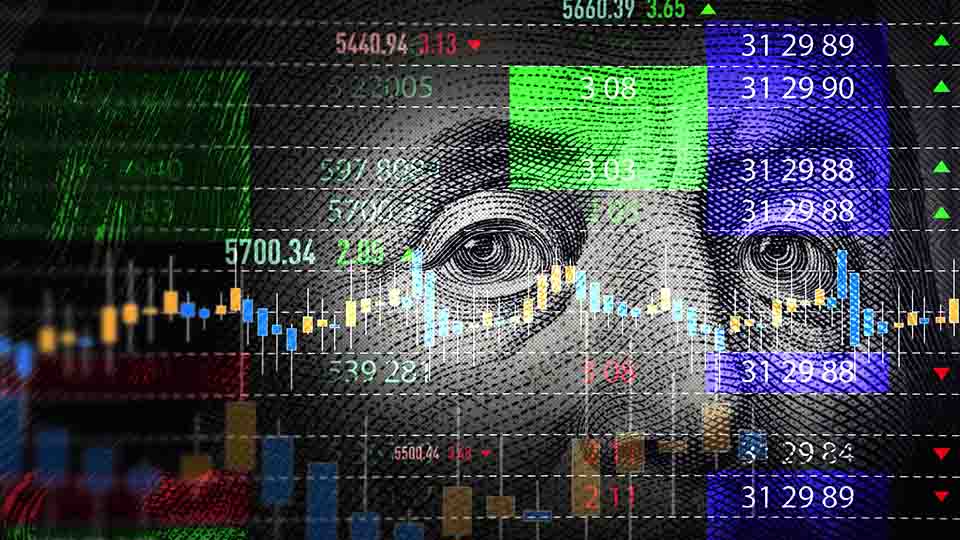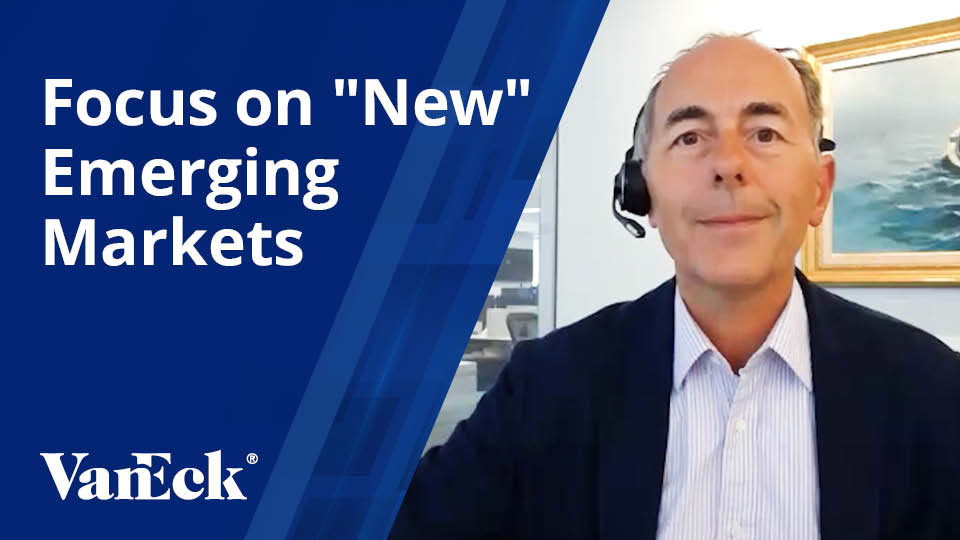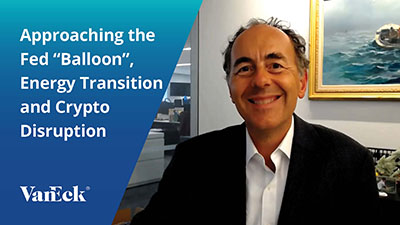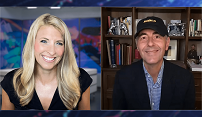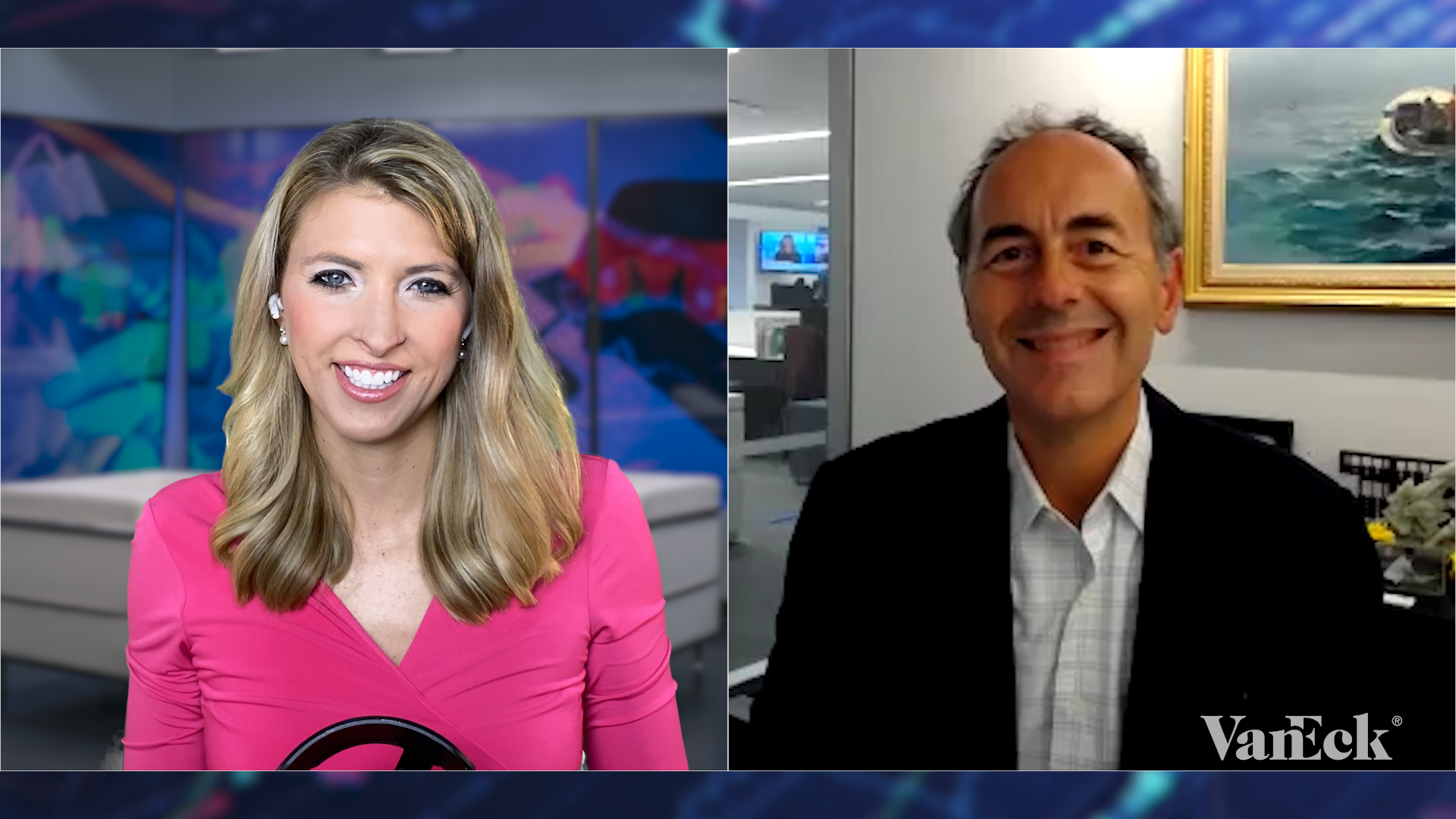Q3 2018 Investment Outlook: Growth Scare Offers Opportunity
15 August 2018
Watch Time 7:37
Q3 2018 Investment Outlook: Growth Scare Offers Opportunity
NATALIA GURUSHINA: VanEck CEO, Jan Van Eck, joins me today to discuss his macroeconomic outlook and also to talk about investment opportunities that he finds most interesting in the current environment. The first question is: You were quite bullish on global growth, on commodities, and emerging markets earlier this year. The second quarter challenged this view, so what do you think right now?
JAN VAN ECK: A dramatically challenged view! And I’m very excited to be here to explain the story. Because I think what happened in Q2 was simply a growth scare. A lot of people became worried that the slowdown in China and slowdown globally, “fill-in-the-blank” wide trade tensions, what have you, really impacted the asset classes that I look upon favorably, commodities and emerging markets. Local currency emerging market debt fell over 10%,1which is really one of its more significant falls in one quarter, and Chinese equities fell 20%.2So what happened is, I think there was a scare about global growth that is wrong. Let me explain why? First of all, I think the perception of U.S. growth being so much ahead of the rest of the world is kind of an exaggeration. Sure, U.S. growth is doing very well, but the rest of the world was not exactly booming. Most parts of the world, frankly, are struggling – South America, the Middle East. So let’s put them aside. Europe slowed down a little bit in the first half and then China’s going through some cyclical changes. But there’s reasons to think that the U.S. won’t be so far ahead of the world. The U.S. will face some headwinds, some higher interest rates. So we think it’s time more to double up on those. Also we don’t think China growth is falling off the cliff. We can argue about this, but they’re going to take some stimulative measures. They deliberately slowed things down to correct excesses in the financial system. And so I view that as not problematic.
GURUSHINA: But there are certain risks out there. So how do you view the balance of risks right now? We can talk about several things; Europe is clearly one of them, trade tensions, the November elections in the U.S., the divergence of global interest rates. How do you see the balance of risks and how does this impact your outlook both for the macro and for investment opportunities?
VAN ECK: From the beginning of the year on we have said that the biggest thing to focus on is Europe. I mean that in a sense of systemic risk. Systemic risk in a sense that they’ve been doing so much quantitative easing, some monetary stimulus to keep the economy going there. And it’s not really even chugging along in Europe; it’s struggling a little bit. And so the risks there are, when they start withdrawing monetary stimulus, will they be able to grow at all? That’s not a problem [here]. We can see that the Fed has raised rates here in the U.S. and growth has continued. So that’s number one. Number two is: Brexit is a political risk in Europe. If you had a hard Brexit, meaning one country suddenly significantly cut off from the rest of Europe through higher tariffs, because they’re not given the same treatment as under the EU, well, that’s going to really impact European growth. Now it might be short term, but still that will definitely be a negative surprise for Europe. And again, I guess, systemically, they’re just weaker. Now, China is a very different story, and you and I were talking about what’s going on there, I think I view it is as a cyclical slowdown risk. No doubt all eyes were on China in the second quarter, and if I wanted to say it was a growth scare, it was a China-driven growth scare. That’s why it hit commodities so directly and emerging markets more generally, because of their linkages to China. But I just think that they will take counteracting measures if things slow down too bad, and which is why I think let’s buy when there’s this scare in the market and things I think will work out.
GURUSHINA: But I think China is also interesting in a sense that it’s moving in the opposite direction from many emerging markets. China is clearly easing whereas many emerging markets are forced to tighten the policy stance in response to those risks that we actually were talking about earlier. But can I actually ask you a question since you’ve mentioned interest rates and also since we are talking about the global rate divergence. The house view is that the 10-year nominal yield in the U.S. probably should be closer to 3½% by the end of the year, but it seems to be stuck under the 3%.
VAN ECK: Really stuck!
GURUSHINA: Really stuck, yes! So what’s your view on that? Because clearly if you look at where the nominal growth goes, the expectations for the Fed, it looks on the low side?
VAN ECK: What are the reasons to think that rates go higher? Nominal growth is good as you said. And the 10-year at some level should track nominal growth. So, we just had a 4% GDP growth quarter. If that continues that will be pulling interest rates higher. That’s number one. Number two: the fiscal deficits in the United States, they will come and go, but they will be a concern. I think that that’s another reason people say: “Wow, the U.S. is great, but it’s not that great.” And then the growth gap that the U.S. has viz-a-viz the rest of the world is another thing that will lessen. Of course, if labor markets continue to tighten there will be wage pressure. There is some wage pressure and there will be more. And that’s just another reason for the Fed to tighten.
GURUSHINA: What is your view on energy equities right now?
VAN ECK: Well, okay. So commodities! It was probably along with 3½% on the 10-year controversial call, because it felt like this could be the best performing asset class of the year. And it’s just what I call this grind trade in commodities, where things are getting better, they’re healing in the sector, but they still feel totally sick. And energy equities, part of this narrative where the supply that’s on the energy side is contracting, companies are more focused on return on capital. And it should be reflected in their stock prices, and it’s not. It’s what we’re waiting for. Part of it is this ridiculous sort of love of growth stocks, of FAANG stocks relative to value stocks. And there is this healing and this question of what will energy companies do with their earnings, pay dividends, buy back stock? Will they return it to shareholders? It might not be now, or never, I say it’s now or never, it may not be in the second half of this year. Maybe it’s early next year because investors will look quarter by quarter at the earnings of these energy companies. But if they don’t perform now I really think I’d give up hope! Let me put the value investors’ true lament, if you will: look at gold shares, they’re selling at eight times cash flow. I would buy almost any company at eight times cash flow, where I think the downside risks are relatively minimal and I get upside optionality to gold if there’s a financial crisis.
GURUSHINA: Fantastic, Jan, thank you very much for your insights. For more insights, please visit us at vaneck.com/blogs where you can also find my daily blog on emerging markets debt.
